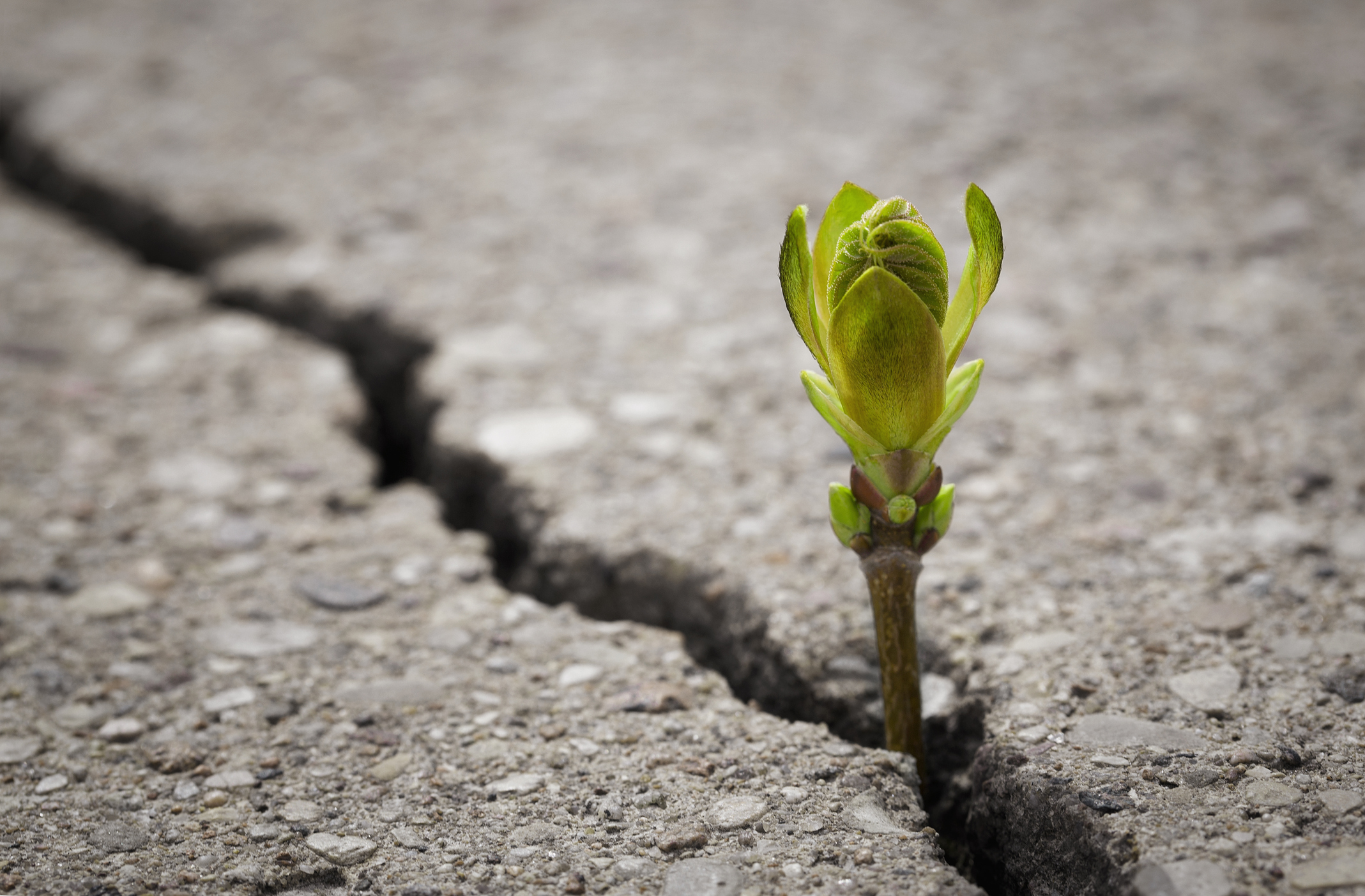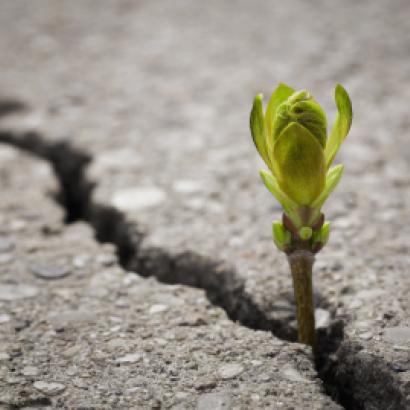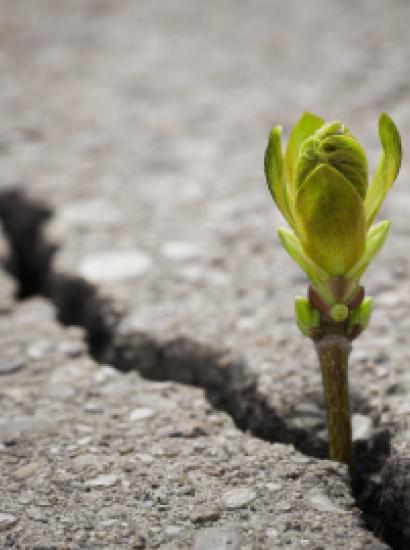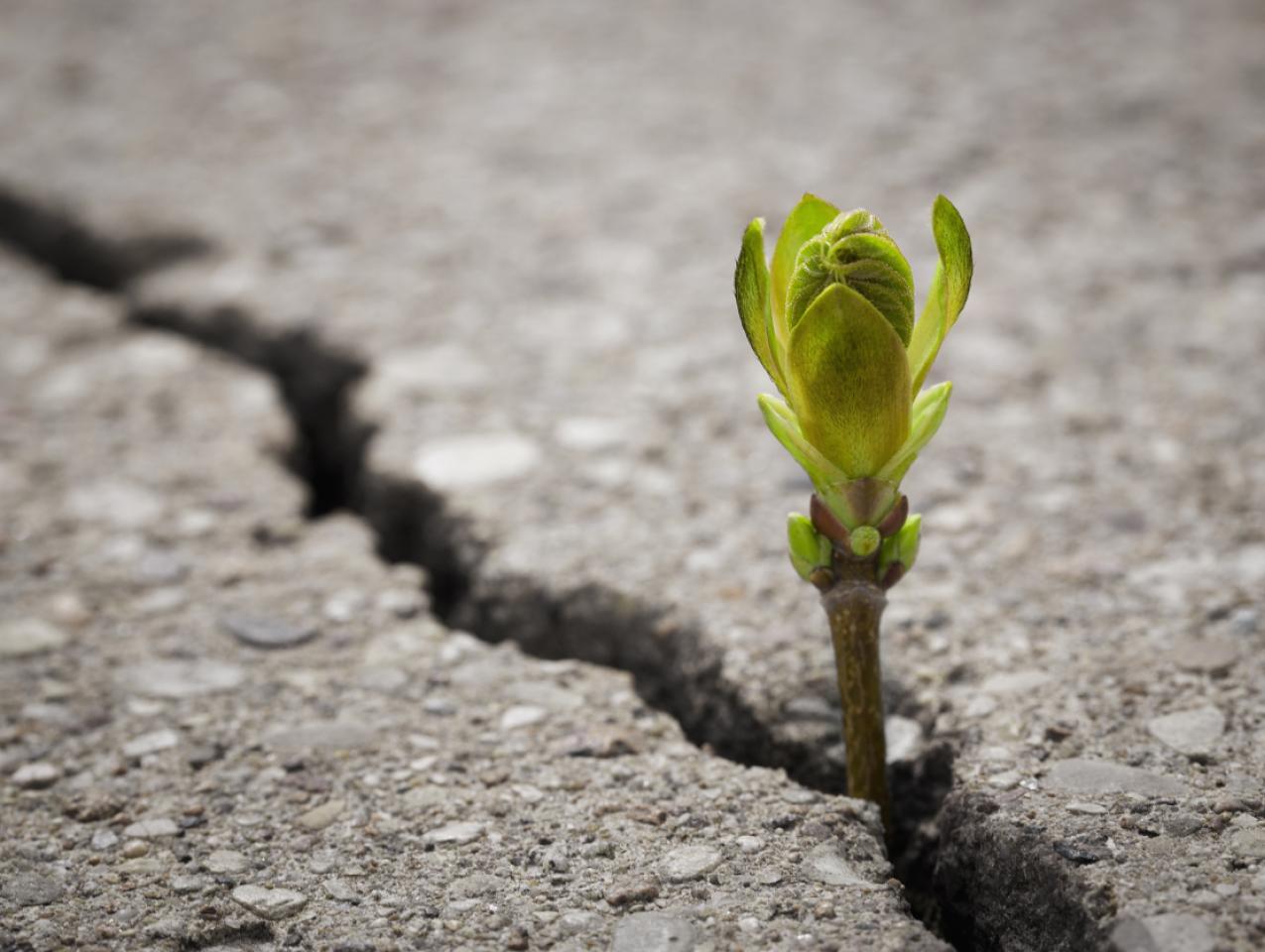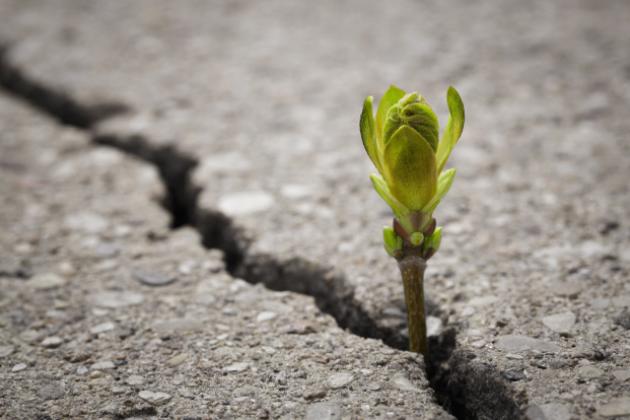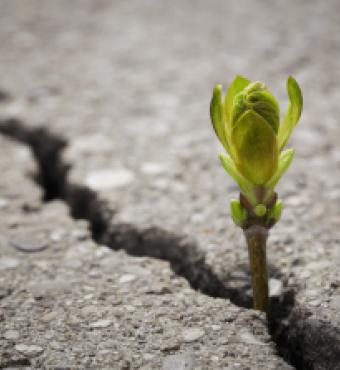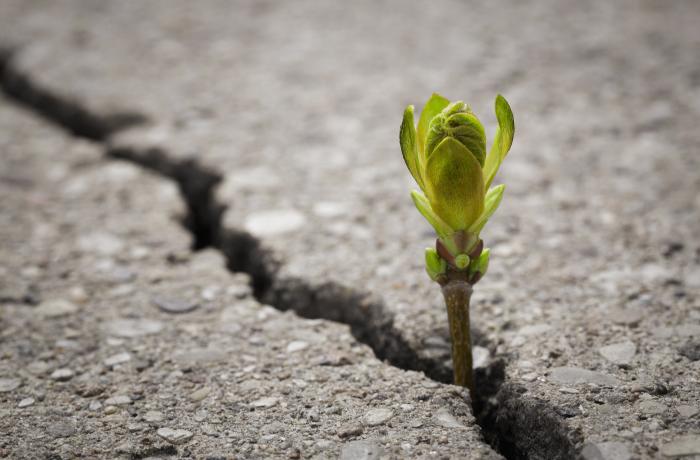- Economics
- Energy & Environment
Editor’s Note: This is an excerpt from a longer essay, “Environmental Markets vs. Environmental Socialism: Capturing Prosperity and Environmental Quality,” by Mr. Anderson. It is published by the Hoover Institution as part of a new initiative, Socialism and Free-Market Capitalism: The Human Prosperity Project.
It is hard to date the beginning of environmentalism. It might have started when the Reverend Thomas Malthus in 1798 penned An Essay on the Principle of Population. Therein he postulated that humans would continue to reproduce until the population demands exceed their ability to produce food, after which famine, disease, and pestilence would check population growth in what has come to be called a “Malthusian trap.” His postulate continues to permeate environmental thinking. For example, in the 1970s, the Club of Rome, armed with data and computers, predicted precise years when we would reach the limits of the world’s resources. Its predictions of disaster for humankind called for regulations to restrict use and consumption of resources and thereby restrict economic progress.
Even though we have avoided Malthus’s trap, this pessimism persists, cloaked in romantic views of nature without human beings. Henry David Thoreau’s Walden provided a romantic, transcendental view from his window and John Muir used wilderness as his environmental pulpit. Both were not sanguine about human beings’ ability to respect and preserve nature. In the twentieth century, Aldo Leopold’s A Sand County Almanac continued the romantic tradition of the nineteenth century, calling for a land ethic to encourage resource stewardship.
Malthus’s ghost set the stage for modern environmental policies with books such as Rachael Carson’s Silent Spring (1962) and Paul and Anne Ehrlich’s Population Bomb (1968). Like earlier predictions, the books forecast famine, pestilence, and wild-species endangerment if humanity did not limit population growth and resource use.
Both of these books set the stage for the environmental movement that gave us a welter of legislation based on the premise that private individuals and companies will not be good environmental stewards, and thus command and control at the federal level is necessary to ensure environmental quality. The classic example of the need for regulation, in this case the Clean Water Act, was the Cuyahoga River fire in 1969, allegedly caused by chemicals in the water but actually resulting from a railroad spark that ignited logs and other debris that had accumulated at a trestle.
Certainly, some environmental regulations have had a positive effect on the environment. For example, endangered species such as the bald eagle are no longer shot or poisoned, and populations of bald eagles have increased enough for them to be reclassified from “endangered” to “least concerned.” Similarly, sulfur emissions have been reduced significantly to reduce the threat of “acid rain.”
The record of environmental regulation, however, is not an upward trend. To the contrary, many regulations—be they environmental, energy, trade, health and safety, and so on—have thwarted environmental and economic progress. Political Environmentalism: Going Behind the Green Curtain (2009) documents several examples. The Endangered Species Act has succeeded in protecting iconic species such as the grizzly bear, whales, and the bald eagle, but it has also made many species the enemy in a war of “shoot, shovel, and shut up.” Recall the spotted owl that was the poster child of protectionists wanting to stop logging in the Pacific Northwest in the late 1990s. Listing the spotted owl as endangered virtually halted logging on almost all of the nation’s national forests, but it also stopped private forest-land owners from wanting the owls on their property. It also encouraged, through higher timber prices, more logging on private lands.
Fishery management focused on season, catch, and equipment regulations led to more intensive fishing during the season, greater bycatch (fish that weren’t targeted for markets, but were killed in the process), and fewer, but bigger and more efficient boats. As a result, such regulated fisheries declined rather than improved.
The hundred-year-old Jones Act, which prohibits foreign ships from carrying goods from one US port to another, has regulated US marine shipping in ways that have increased greenhouse gas emissions. The US commercial fleet is powered by engines that are far less efficient and produce higher emissions than those of less regulated foreign fleets. And because of the reduced efficiency, it takes more ships to carry the same goods. As University of Chicago economist Casey Mulligan reports, “A sizable amount of the cargo that, without the Jones Act, would be shipped on coastal waters ends up on trucks congesting our highways and polluting our atmosphere, especially near large cities where many people live and breathe.”
Give Credit to Ingenuity
Despite the detrimental effects of regulations and the doom and gloom from environmentalists, all the evidence suggests, as the Beatles song put it, “it’s getting better all the time” and the improvement is closely linked to human ingenuity, prosperity, and economic growth.
One of the more systematic analyses of the relationship between prosperity and the environment is the environmental sustainability index (ESI) developed by the joint efforts of the World Economic Forum, the Yale University Center for Environmental Law and Policy, and the Columbia University Center for International Earth Science Information Network. The group measured 145 nations based on 20 indicators and 68 related variables to place a sustainability score on each nation. On the ESI scale for 2002, Finland came in first, with a score of 73.9, and Kuwait came in last, with a score of 23.9.
The most significant findings derived from the ESI study compare each nation’s ESI score with its gross domestic product (GDP) per capita and show a strong positive relationship between wealth and environmental quality. The data follow the pattern of what economists call the environmental Kuznets curve: generally, environmental quality declines in the early stages of growth and then increases after a certain threshold, where the turning point varies with the environmental goods in question. As incomes rise, people shift their focus from obtaining the basic necessities of life to other goods and services. For a person living at subsistence, setting aside land for wildlife or reducing carbon emissions to reduce the potential for global warming is unfathomable. With higher incomes, people demand cleaner water, cleaner air, and other ecosystem services. And the higher demand for environmental amenities stimulates environmental entrepreneurship.
Whether economic growth occurs, and whether it is positively correlated with environmental quality, depends mainly on the institutions—especially secure property rights and the rule of law—in each country. Economic growth creates the conditions for environmental improvement by raising the demand for improved environmental quality and makes the resources available for supplying it. Whether environmental quality improvements materialize or not, when, and how, depends critically on government policies, social institutions, and the completeness and functioning of markets.
Institutions that promote democratic governments are a prerequisite for sustainable development and enhanced environmental quality. Where democracy dwells, constituencies for environmental protection can afford to exist—without people fearing arrest or prosecution. The democratization of thirty-plus countries in the past thirty-five years has dramatically improved the prospects for environmental protection. In the other direction, dictatorships and warlords still burden people and environments in many parts of the world such as China and much of Africa.
Seth W. Norton calculated the statistical relationship between various freedom indexes and environmental improvements. His results show that institutions—especially property rights and the rule of law—are key to human well-being and environmental quality. Countries with lower freedom index scores, mainly founded on socialism, have both less environmental quality and less prosperity. Consider Venezuela, one of the world’s more repressed economies. It ranks only above North Korea in the Heritage Foundation’s freedom index. It has one of the ten most biodiverse environments in the world and was a prosperous nation at the beginning of the twenty-first century. After decades of socialism, however, environmental quality has declined along with prosperity. It has the third-highest deforestation rate in South American, sewage pollution in its water supplies, soil degradation, and urban pollution.
Free Market Environmentalism
Property rights and markets provide the foundation for “free market environmentalism.” This combination connects self-interest to resource stewardship by compelling resource owners to account for the costs and benefits of their actions and facilitate market transactions that create efficiency-enhancing gains from trade. To be sure, some people may act with enlightened self-interest if they are motivated by Aldo Leopold’s land ethic. However, good intentions are often not enough to produce good results, which is why Leopold, the pragmatic environmentalist, also declared that “conservation will ultimately boil down to rewarding the private landowner who conserves the public interest.”
Markets based on secure property rights provide a decentralized system for enhancing the value of resources. They generate information in the form of prices that give demanders and suppliers objective measures of subjective values. Resource stewardship will occur as long as private owners are rewarded for the benefits they generate from resource use while being held accountable for any costs they create.
Governments play a critical role in clearly specifying and recording ownership claims, establishing liability rules, and adjudicating disputed property rights. That said, well-defined and enforced property rights impose discipline on resource owners by holding them accountable for the damage they do to others and rewarding them for improving resource use. Property rights incentivize owners to protect the value of their environmental assets and also align self-interest with society’s environmental interests.
Trade encourages owners to consider not only their own values in decisions about natural resource use but also the values of others who are willing to pay for the use of the resource. For example, where water has a higher value left instream, environmental groups have negotiated with diverters—framers and municipalities—to leave more water instream for fish and wildlife. Transferable fishing quotas have given fishermen a stake in ocean fishery management and efficiently improved fish stocks and allowable catches. When such rights are transferable in the marketplace, owners, be they individuals, corporations, nonprofits, or communal groups, have an incentive to evaluate long-term trade-offs since their wealth is at stake.
Market forces based on demand and supply of environmental goods and services stimulate human ingenuity to find ways to cope with natural resource constraints. Producers improve productivity and find substitutes to conserve in the face of resource scarcity, while consumers reduce consumption and redirect their purchases in response to changing prices.
Free market environmentalism also embraces the free enterprise market system as a proven engine for economic growth, which, in turn, is an important driver of environmental quality. Free enterprise leads to new technology and innovation that stimulates growth in other sectors can be applied to the environment, thus reducing the cost of producing environmental quality.
Perhaps the hardest environmental issue to deal with using markets is climate change. The benefits of reducing the rise in global temperatures are diffuse across the world and across time; the benefits accrue over dozens or hundreds of years; and the costs accrue and are concentrated on companies that produce hydrocarbons and economies that depend on them. Couple this with the impossibility of defining and enforcing property rights to the atmosphere, and market solutions seem impossible.
The good news that asset and financial markets are already responding to climate change. Increased rainfall raises the value of land for crops, lower snowfall reduces the value of ski resorts, rising sea levels and storm surge lower the value of beach front properties. As a result of shifts like these, asset owners and investors facing higher variance in their returns are adapting. As Hoover Senior Fellow Edward Lazear said in a Wall Street Journal article, “economic incentives will induce people who are setting up new households, businesses, and farms to move to areas that are less severely harmed by warming temperatures.”
Tending the World’s Garden
Markets, like Mother Nature, hold no guarantees, but then no institution, private or public, does. Similarly, forces in the human world are complex and difficult to model and predict. There are individual responses to what Friedrich Hayek called the “special circumstance of time and place.” In assessing the success of any human response to those circumstances, we must always recall that nature and people are dynamic, and ask whether and how people will respond. Both nature and humans have shown remarkable resilience. As science writer Emma Marris puts it, we live in a “rambunctious garden” that seems to survive despite human action.
Can human action make the “rambunctious garden” even more “uncontrollably exuberant”? This would require a system capable of determining what the human demands are for environmental goods and services, and what natural capabilities there are for meeting them. It would depend on getting the incentives right to collect information on both sides of this equation.
The central theme of free market environmentalism is that property rights and markets do this. Property rights create incentives for owners to know what they have, know what environmental goods they can produce, and know what demands there are for environmental resources. Environmental markets create information on all of these dimensions in the form of prices.
Between these two institutions—property rights and markets—are environmental entrepreneurs who reduce the friction, which economists call transaction costs. These “enviropreneurs” observe when natural conditions or human demands change, discover new environmental resources, see new opportunities for existing resources, discover demands for environmental goods, and find ways to get demanders to pay suppliers. All of these entrepreneurial actions work best when property rights are well defined, enforced, and marketable.
If human action can be linked to our dynamic natural environment through property rights, markets, and prices, the rambunctious garden will not just survive, it will thrive. Free market environmentalism offers optimism for future generations.







